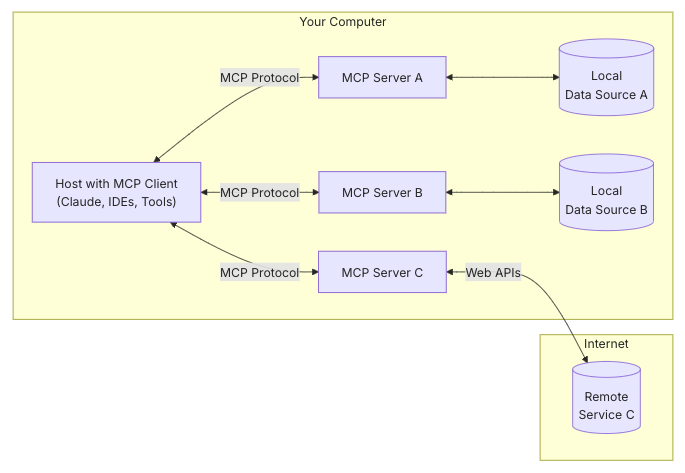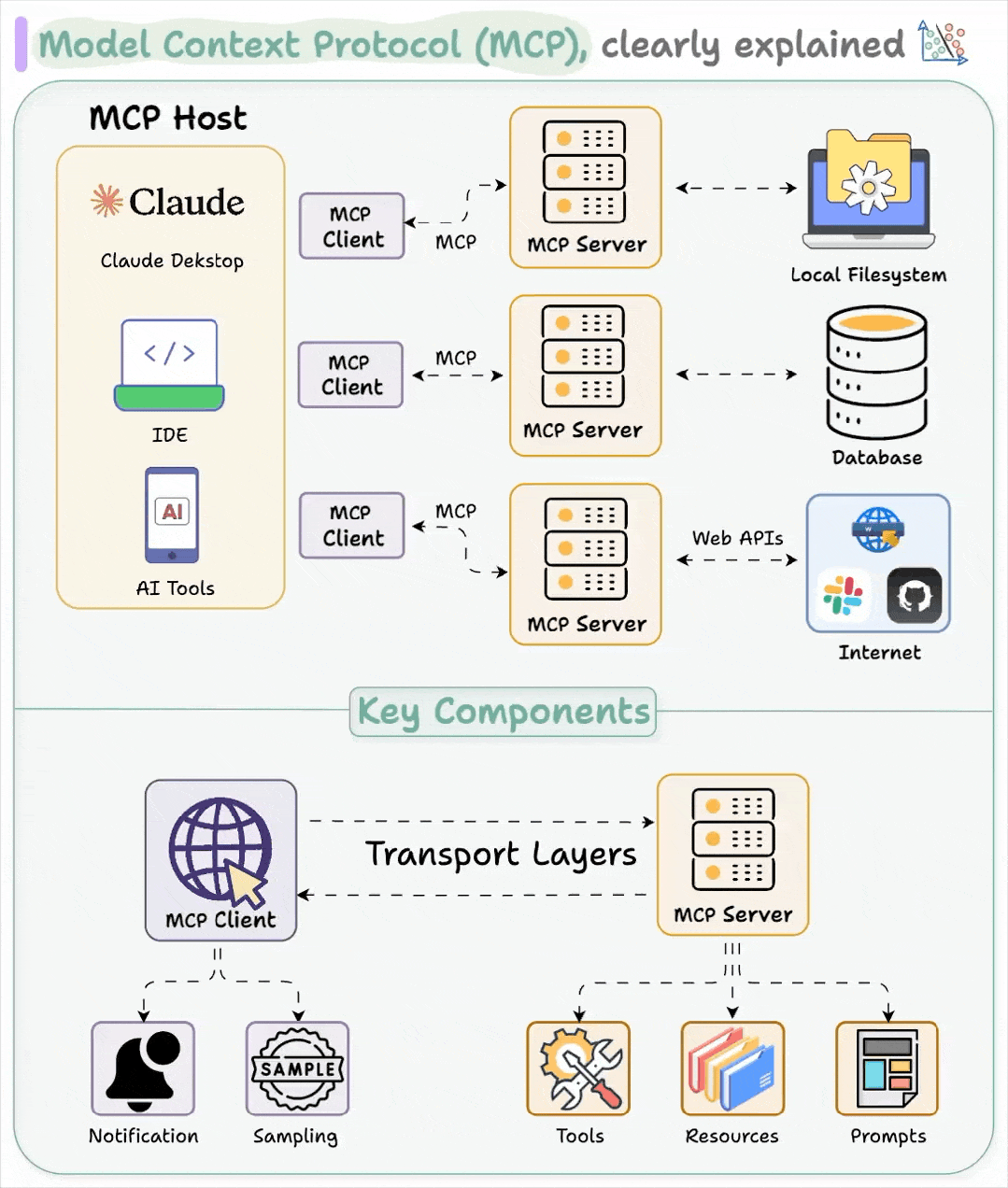Model Context Protocol
Introduction
MCP is an open protocol that standardizes how applications provide context to LLMs. Think of MCP like a USB-C port for AI applications. Just as USB-C provides a standardized way to connect your devices to various peripherals and accessories, MCP provides a standardized way to connect AI models to different data sources and tools.
General architecture

- MCP Hosts: Programs like Claude Desktop, IDEs, or AI tools that want to access data through MCP
- MCP Clients: Protocol clients that maintain 1:1 connections with servers
- MCP Servers: Lightweight programs that each expose specific capabilities through the standardized Model Context Protocol
- Local Data Sources: Your computer’s files, databases, and services that MCP servers can securely access
- Remote Services: External systems available over the internet (e.g., through APIs) that MCP servers can connect to

Concepts
Resources
Resources are a core primitive in the Model Context Protocol (MCP) that allow servers to expose data and content that can be read by clients and used as context for LLM interactions.
Prompts
Prompts enable servers to define reusable prompt templates and workflows that clients can easily surface to users and LLMs. They provide a powerful way to standardize and share common LLM interactions.
Tools
Tools are a powerful primitive in the Model Context Protocol (MCP) that enable servers to expose executable functionality to clients. Through tools, LLMs can interact with external systems, perform computations, and take actions in the real world.
Sampling
Sampling is a powerful MCP feature that allows servers to request LLM completions through the client, enabling sophisticated agentic behaviors while maintaining security and privacy.
Roots
Roots are a concept in MCP that define the boundaries where servers can operate. They provide a way for clients to inform servers about relevant resources and their locations.
Transports
Transports in the Model Context Protocol (MCP) provide the foundation for communication between clients and servers. A transport handles the underlying mechanics of how messages are sent and received.
Application - BrowserTools
BrowserTools embeds AI code editors and agents directly into your web browser
https://browsertools.agentdesk.ai/installation
Refer
https://www.anthropic.com/news/model-context-protocol
https://modelcontextprotocol.io/introduction
